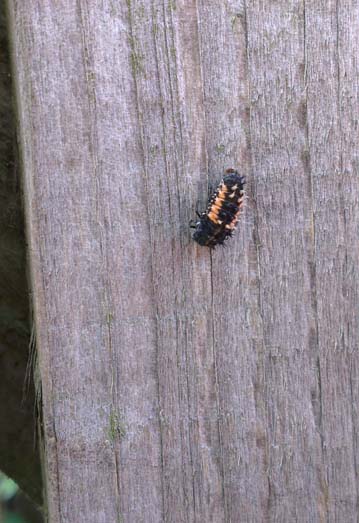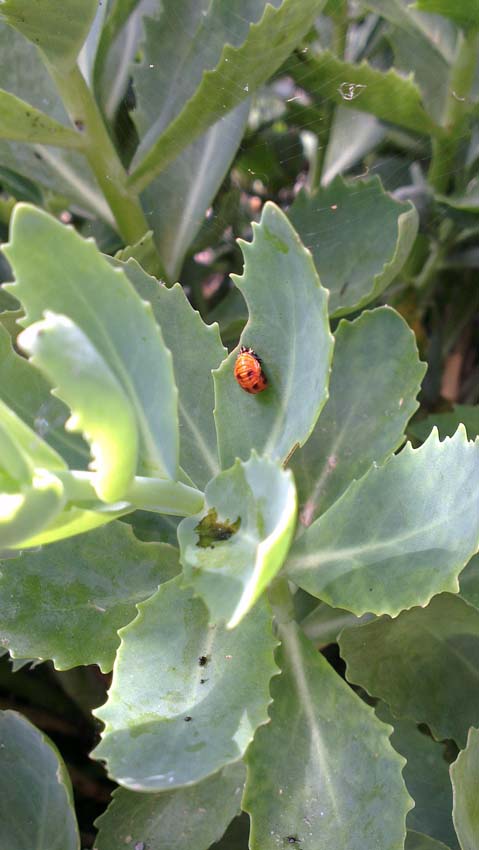 It has been so hot here. All the doors and windows of the house are flung wide open. Wren sleeps in just her nappy but only fitfully. She wakes up grumpy, her curls plastered to the back of her neck. At the weekend we paddled in a cool lake on Dartmoor, and admired banks of purple foxgloves down shady woodland paths.
It has been so hot here. All the doors and windows of the house are flung wide open. Wren sleeps in just her nappy but only fitfully. She wakes up grumpy, her curls plastered to the back of her neck. At the weekend we paddled in a cool lake on Dartmoor, and admired banks of purple foxgloves down shady woodland paths.
I have finally put two and two together in the garden and am left with the question: how did I not know how ladybirds develop? I know all about caterpillars and butterflies (thank you very much Mr Carle) but not anything about ladybirds…and consequently I hadn’t clocked certain natural goings-on in the garden were linked. Remember me mentioning transporting sleepy ladybirds that had just come out of hibernation from the landing window sill outside? Remember the black aphid infestation of the Japenese maple and how nature slowly took its course and they went? Yes, I know you lot knew, clever clogs the lot of you! I didn’t.
 Ladybirds hibernate over winter, wake up, mate and then lay their eggs. I had noticed these funny little black and red beetley creatures (see the first pic above) but didn’t know that this is what baby ladybirds look like! And I didn’t know that their absolute favourite thing to eat is an aphid! It was only when they started attaching themselves by one end to various leaves and the garden gate that I realised they were all slowly turning into ladybirds! Here’s one, well on its way. I think it will be a seven-spot. I wonder how long this cycle has been happening? Ladybird parents eye up the maple in late summer, thinking to themselves, that’ll be covered in aphids next spring, I’ll just have a little kip here then nip down and lay my eggs nearby when the time comes. Lo and behold the aphids turn up, the baby ladybirds hatch and feast away, the maple breathes a hearty thanks, the baby ladybirds grow up to be ladybird parents, and so it goes on.
Ladybirds hibernate over winter, wake up, mate and then lay their eggs. I had noticed these funny little black and red beetley creatures (see the first pic above) but didn’t know that this is what baby ladybirds look like! And I didn’t know that their absolute favourite thing to eat is an aphid! It was only when they started attaching themselves by one end to various leaves and the garden gate that I realised they were all slowly turning into ladybirds! Here’s one, well on its way. I think it will be a seven-spot. I wonder how long this cycle has been happening? Ladybird parents eye up the maple in late summer, thinking to themselves, that’ll be covered in aphids next spring, I’ll just have a little kip here then nip down and lay my eggs nearby when the time comes. Lo and behold the aphids turn up, the baby ladybirds hatch and feast away, the maple breathes a hearty thanks, the baby ladybirds grow up to be ladybird parents, and so it goes on.
THANK goodness I didn’t spray the tree!






